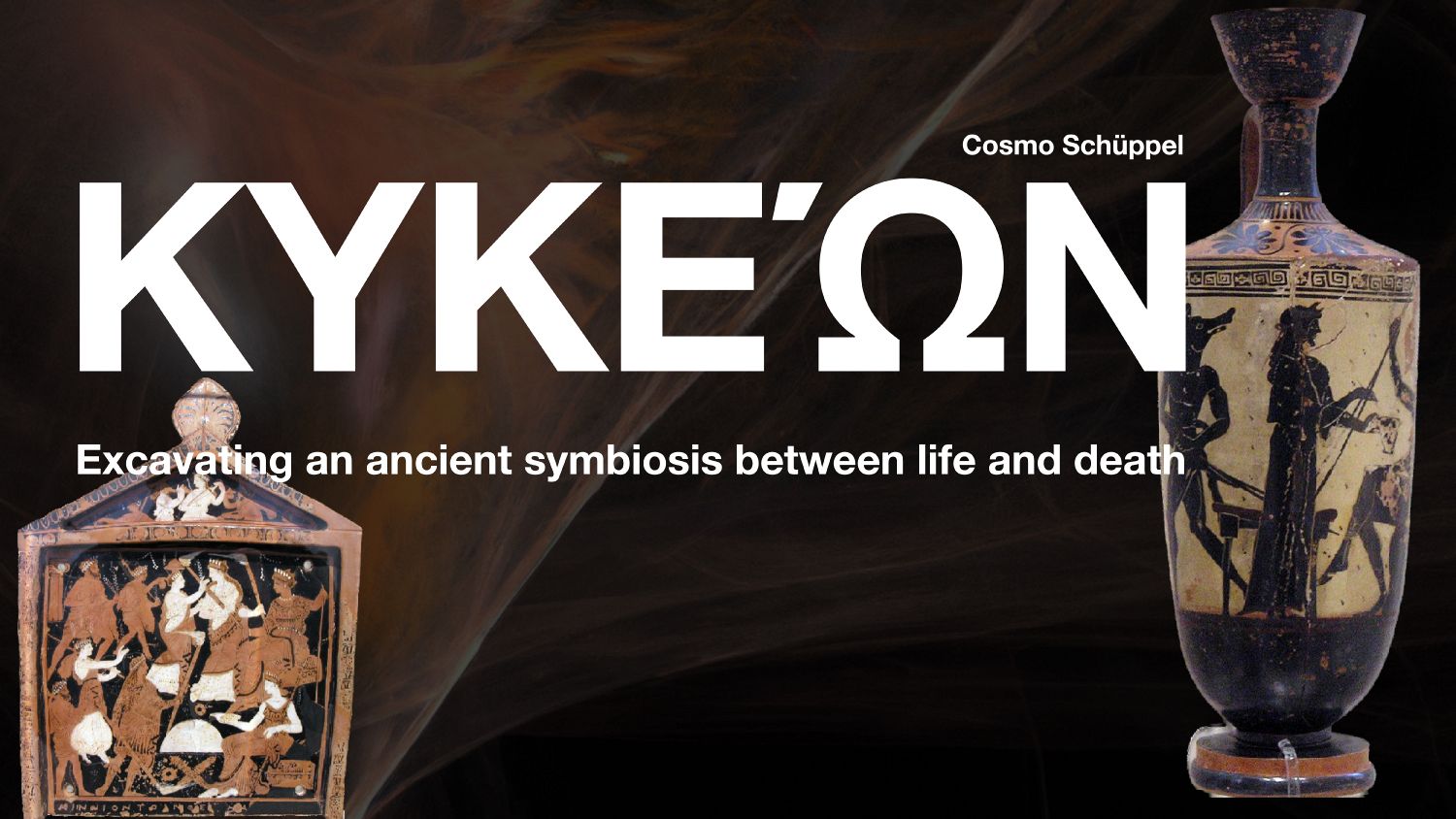KYKEΩN-PROJECT (working title)
Detailed process documentation on:
(concept as of 10.11.2022)
The Kykeώn-Project explores the ancient greek ritual-cult surrounding the Mysteries of Eleusis - and its tradition of transcending death. Contemplating the approach that our society takes in approaching death has become a necessity in times of COVID and the Russian Invasion into Ukraine, but holds a timeless importance.
Taking the Elysian Mysteries as an example the project wants to raise the question about how we approach the end of life and what it means pass on. The Mysteries were a Ritual in the honor of Demeter and Persephone - Mother and Daughter bound together in the pain of getting ripped apart and is deeply connected to life, death and environmental questions. Although most knowledge about the ancient practice is lost and hidden behind vows of silence, we know that the ritual used a drug-like substance to explore death and reincarnation. It was called Kykeώn (Kykeon in anc. greek means ‘mixture, potion’). Kykeώn was a kind of beer from rye and mint, with the rye being contaminated with the Rye-Ergot-Fungus (Claviceps Purpurea). This fungus, like most in the Ergot Family hold a strong psychoactive potential - containing a fair amount of Ergin. Ergin is commonly better known as Lycergic Acid (LSA) and was used by Hoffmann in the 1930s to synthesise the first LSD.
Besides its importance in the Elysian Mysteries, the rye-ergot-fungus also played a central role in the dark ages in Central Europe. On the one hand Ergot was responsible for tens of thousands of deaths due to its toxic properties, when consumed regularly. This was often the case, because the fungus, growing parasitical on rye and barley, was unknowingly ground into flour. On the other hand, Ergot was also used as a medicine for treating heavy bleeding - predominantly in child birth.
‘Die before you die, so when you die you will not die’ was the Mantra of the Elysian Mysteries. Often re-quoted until today, in ancient times it was a physical practice. When taking a high amount of Ergot fungus, the subject will get poisoned, becomes nauseous, start to vomit and will eventually faint. After being passed out for about 4 hours, the subject will awake and the entheogenic ‘trip’ will begin.
Historical whiteness testimonies tell us about how the ritual has restructured how they approach death and how the mysteries gave them faith, hope and confidence in the face of passing on.
Through big parts of the human history, Ergot fungus is deeply entwined with death and also life. The use in the Elysian Mysteries brings these antagonal principles together and transcends them in a cathartic ritual. It incorporated theater, performance, music, shamanic like guides and the indescribable knowledge of how to. Accept and transcend death.
(personal perspective)
Life and death is of course not at all a new or original topic, but it is one that has been deeply personal to me for as long as I can remember. Through Covid and the war it has been coming up again and again, and I feel the need to address it. In my opinion we are lacking an acceptance and understanding of death in our post-medieval society. In many ways and especially in this project I am looking for examples in history where the approach to death was different and maybe more healthy.
(goal and outcome)
The goal of the project will be to understand and recreate the lost ancient ritual substance Kykeώn. And presenting it in a research based room installation - drawing the parallel between ancient and modern times in form of texts, notes, scribbles and sketches. I am also thinking of working with a narrative sound piece that is played in the installation space - exploring the topic from a more personal perspective as a experimental audio-essay.
